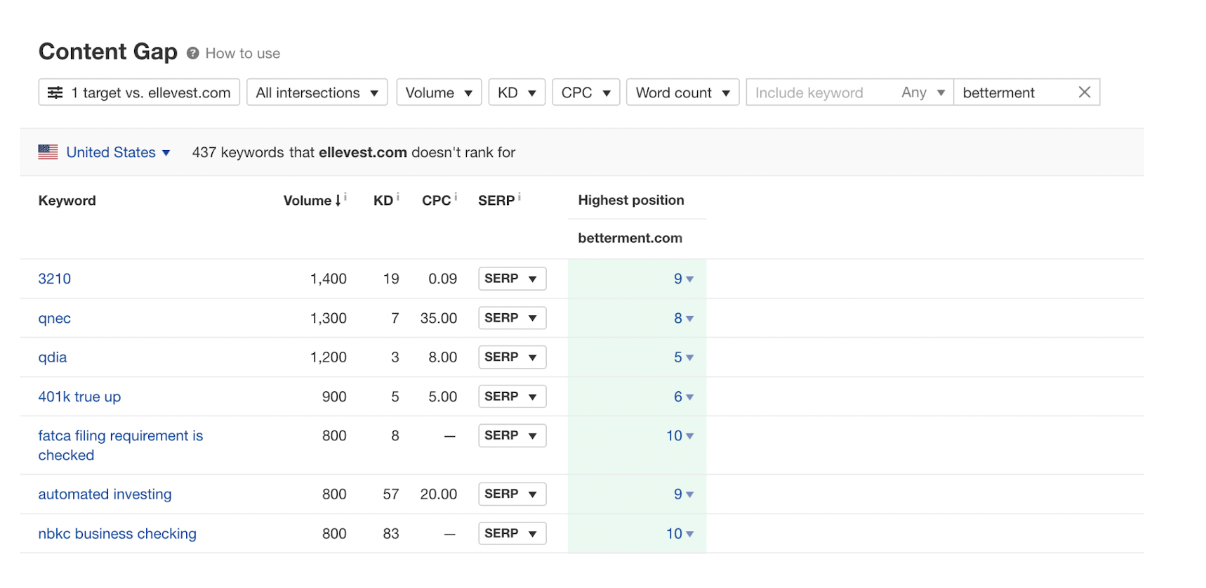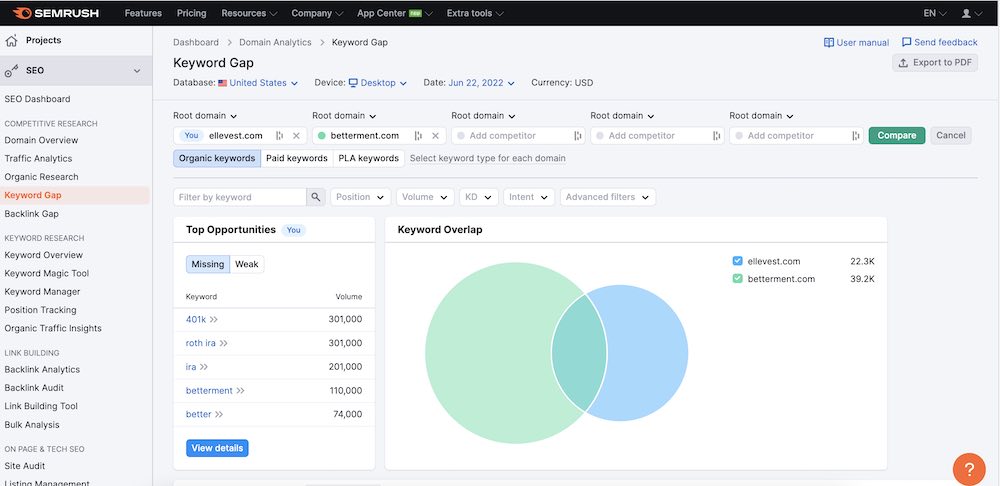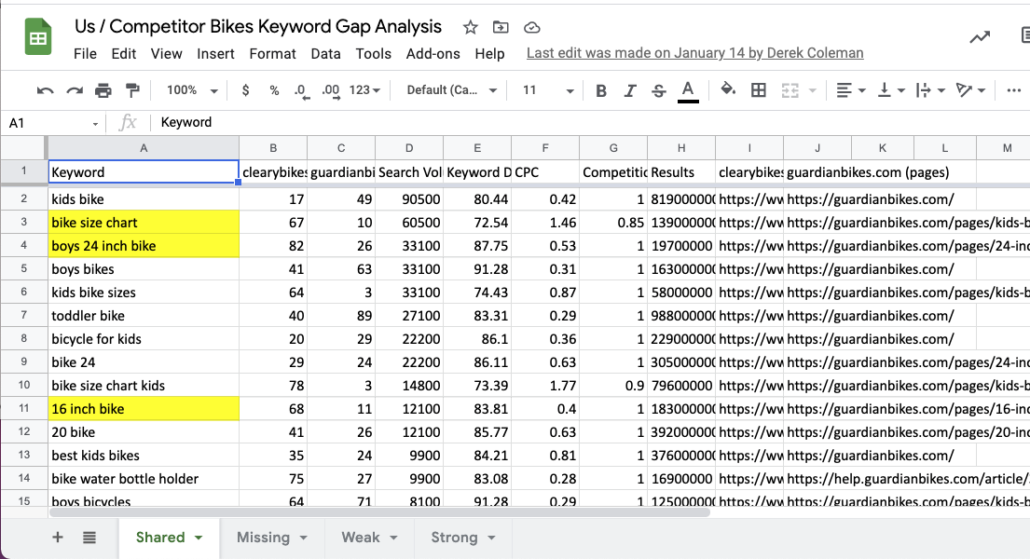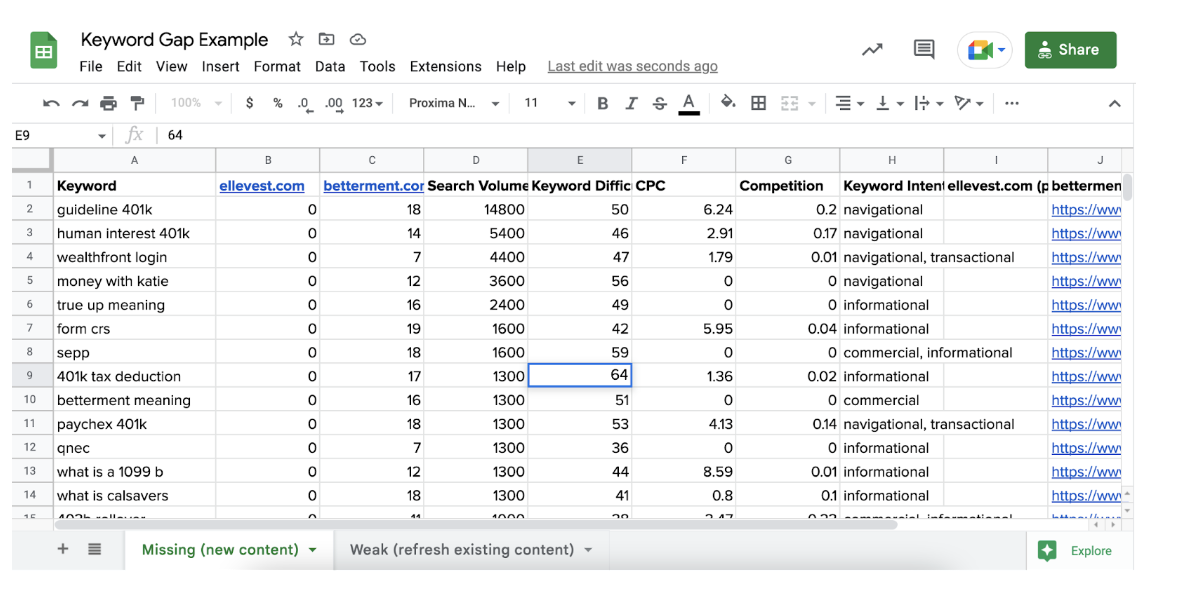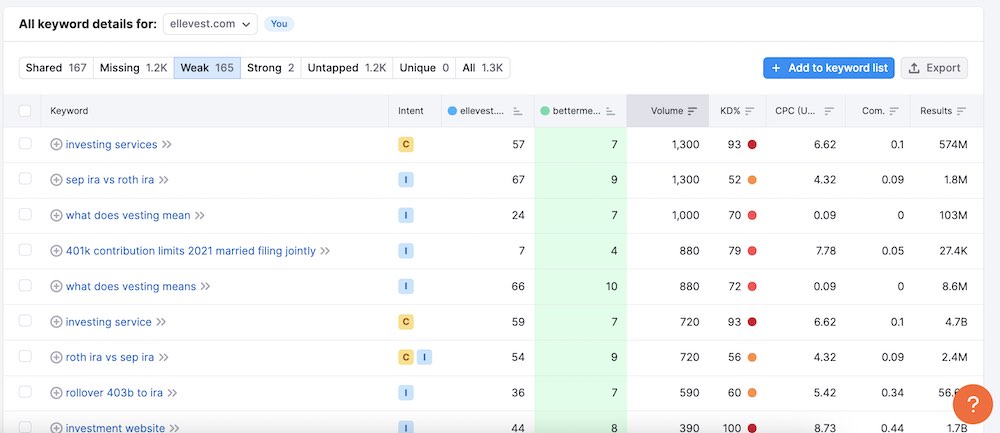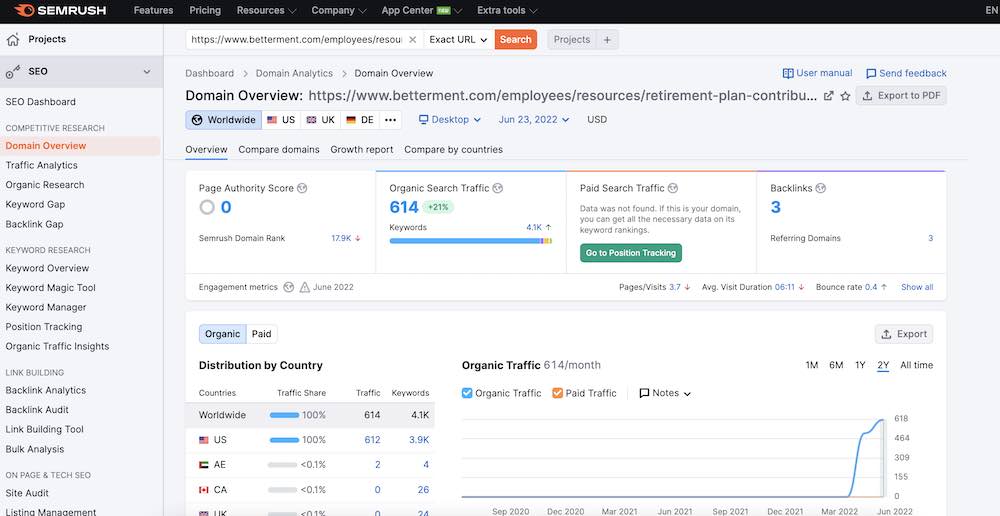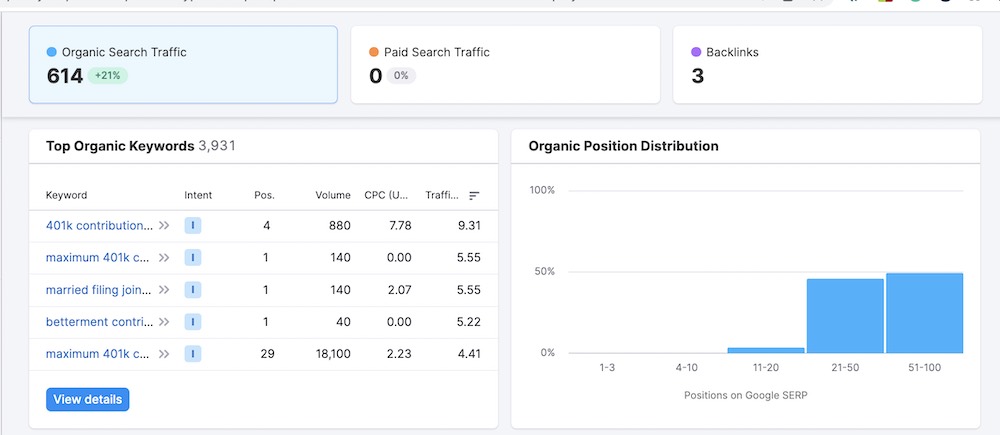How to Do a Keyword Gap Analysis
Author’s Note: This post was updated on March 20, 2023 with new links, data, insights, and resources.
You can use various methods to conduct keyword research. However, a keyword gap analysis—also sometimes called a content gap or keyword competitor analysis—is a must.
When it comes to SEO, there are no ties. Only one company can be in the number one spot, and to get the most organic traffic, you want that to be your site.
We know the top result in Google gets over 31% of clicks, with some variation depending on the industry, keyword, and device. However, no matter the industry, the number of clicks (and consequently traffic) that goes to your website drops consistently as you drop from one to two and so on.
If competitors are outranking you, then they’re getting more organic traffic, leads, and likely sales.
However, you can beat them with a strong SEO strategy, and a keyword gap analysis helps you create one. We’ll show you how to conduct a keyword gap analysis using tools like Semrush, and how you can use it to build a content strategy.
What is a keyword gap analysis?
A keyword gap analysis is an SEO strategy that compares your site to your competitors to find keywords that rank the highest and drive the most traffic.
Your keyword “gaps” are areas in which you could overtake your competitors and outrank them. In short, it’s a way to reveal keyword opportunities you’re missing out on.
It’s also an essential part of an SEO competitive analysis. First, you’ll identify keywords that your competitors rank for, but you don’t. You’ll also identify keywords that you have a low ranking for, for example, positions 5 to 15. From there, you can create a strategy to “boost” low rankings and steal keywords from your competitors.
Why is keyword gap analysis important?
The ultimate goal of any holistic SEO content strategy is to drive traffic to your site. But you don’t want just any traffic. You want high-value, high-intent website visitors whose problems you can solve.
A keyword gap analysis helps you discover those keywords. It reveals areas of opportunity where you can create new content or improve existing content to increase rankings and traffic.
A keyword gap analysis isn’t only important for SEO, but for paid search campaigns. You can use it to identify your competitor’s paid search terms as well. It’s even more useful when you combine your learnings from paid and organic to inform your strategy.
At Tuff, PPC and SEO teams collaborate. We share insights on keyword volume, performance, and conversions, so paid and organic search strategies work together. When doing keyword research, we look at:
- Which paid keywords convert the most?
- How much money do they cost for paid search?
- Can you rank for them organically and save money?
Ranking for top keywords on paid and organic channels translates into more traffic – and more revenue.
How to do a keyword gap analysis
You don’t need to be an SEO master to do a keyword gap analysis. However, having a professional on your side is always helpful to interpret results and create a list of target keywords. Here’s how we do it at Tuff.
1. Identify competitors
If you haven’t already, you’ll need to create a list of at least two to three competitors that have a strong organic traffic strategy. If you’re not sure where to start, you can use our two-step guide to identify competitors. Now, that you have your list, you can use it to figure out why those sites are outranking you.
2. Pick your tools
You’ll need at least one SEO tool in order to perform a keyword gap analysis. We use Semrush, which has a free version available with a limited amount of queries allowed. (That’s another benefit of hiring an agency – we have the tools and the expertise to use them!)
You can also try Ahrefs’ Content Gap tool, but it is not as powerful or intuitive as Semrush when it comes to filtering.
For example, it’s easier to use if you’re looking for keywords that you’re not ranking for at all (new content opportunities). It’s possible to filter search queries to look at your competitor’s position compared to yours but it takes some finesse.
In general, its keyword gap tool is not as user-friendly as Semrush. For comparison, this is what doing a keyword gap analysis in Ahrefs looks like after filtering out branded terms.
3. Get your keyword list
Open up your tool and enter your website domain. Then enter your main competitors and click “Compare.” The keyword gap tool will show you a list of keywords your competitors rank for and where you appear in the SERPs for those same words.
If you are using Semrush, you’ll go to the left menu and use the keyword gap tool.
As an example, let’s compare two popular investment companies—Ellevest and Betterment. We’re not affiliated with either, but you can easily compare their organic strategy using
You can sort by organic, paid, or PLA (this stands for Product Listing Ads and you need a business account in Semrush to use it).
Semrush will also show you keyword volume, difficulty, competitive density, and CPC among other metrics. For in-depth analysis, download the file as a CSV report so you can sort and search more easily.
4. Interpret your results
Now you need to determine where you can get the most value from your keywords. Your keyword tool will do some of the work for you.
Semrush, for example, has a section showing “Top Opportunities” for keywords that your site is missing as well as weak keywords—where you have a ranking but it is lower than all of your competitors’ rankings.
To discover opportunities yourself, look for keywords that are:
- Highly relevant to your business and your website
- Regularly searched for by your target audience
- Not overly competitive, but still high-value
- Easily filled using existing content or easy to create new content for
We export each keyword gap analysis into a spreadsheet to better sort, analyze, and filter the data. It looks something like this with four core tabs: Shared, Missing, Weak, and Strong.
5. Identify opportunities
When you’re just starting your research, you’ll want to focus on weak and missing keywords first. Here’s why:
- Weak – these are words that your competitors rank higher than you for, and there are prime candidates for content remediation
- Missing – these are words that your competitors are ranking for, and you are not ranking for at all
When planning SEO content, this will help you decide if you need to update a page or create a new one. Generally, you can follow this rule:
- Weak = refresh old content
- Missing = create new content
Your keyword export (example here) will look something like the image below once you upload it to Google Sheets.
You can also prioritize which opportunities you should focus on by filtering the keyword gap results. Go to the Positions filter, Competitors, and choose to view only the terms that they are ranking for in the top 10 or 20.
Using our investment app example, let’s look at gaps in the top 10 results. You can see that Betterment is outranking Ellevest for some relevant keywords like “what does vesting mean” and “roth ira vs sep ira”.
Of course, this is the initial research, you’ll want to refine your results further to narrow terms down based on keyword difficulty and intent.
6. Try a page-level analysis
You already know a few areas where you and a competitor have similar articles. You want to determine what they’re doing right and replicate it.
To figure this out, do a page-level analysis. You can enter an exact URL of a competitor’s page and compare it to your own to see what you may be missing. You’ll either add those keywords to your page—or create an entirely new page—and start stealing competitors’ traffic.
This can also help you determine the best keywords to go after. For example, if we look closer at the terms that Betterment outranked Ellevest for, you can see exactly which pages rank.
In Semrush, you can see that Betterment is ranking for a lot of 401k keywords, but which ones are driving the most traffic? Luckily, Semrush will list URLs for each keyword when you export a CSV file. All you need to do is go to Domain Overview, add the URL, and search by Exact URL.
Most of those 401K terms are coming from a blog on retirement. According to Semrush’s data, a little over 600 people are visiting that page alone.
You can see exactly which terms are driving traffic to the URL and decide if it’s worth adding to your content calendar. Scroll down and go to the section marked “Top Organic Keywords”. It will give you a list of every search query that page ranks for and the percent of traffic it contributes.
7. Put it into action
How do you know whether to refresh an existing page or create a new one? What types of content will most effectively attract customers from your competitors? This is where SEO becomes not a science, but an art.
To determine your plan of action, analyze the top content that is already ranking for that keyword and look for things like:
- Type of content (video, blog, gallery, etc.)
- Content length and organization
- Headers and keywords used
Do you have content that already fulfills these criteria? You can update it to use the new keywords. If you don’t, you’ll want to create something new.
Organic growth is crucial to the overall growth of your business, but it isn’t always straightforward. Tuff can help you with every step of the process, from performing a keyword gap analysis and determining the best course of action to creating content that outranks the competition. Contact us today to get started.


